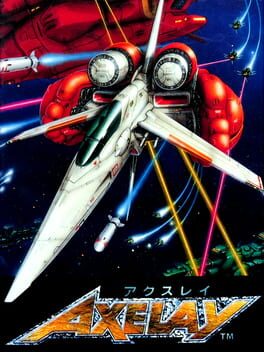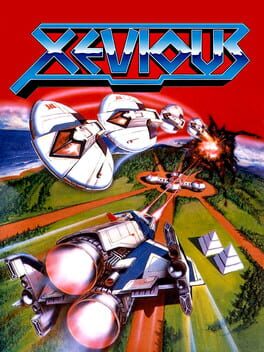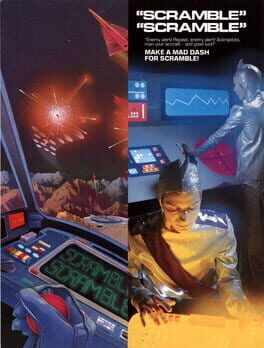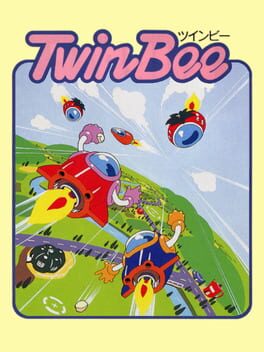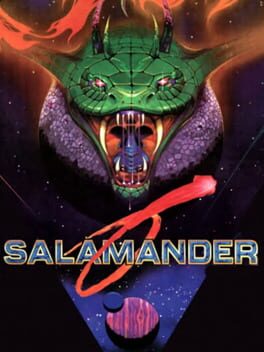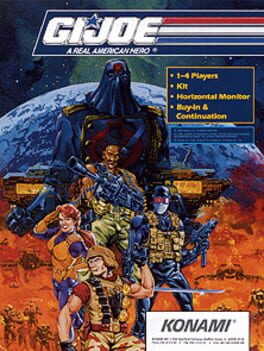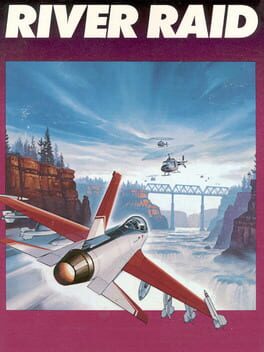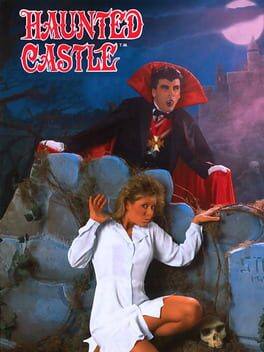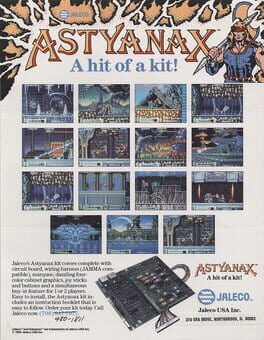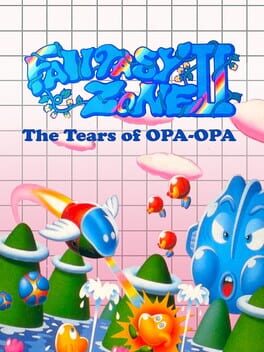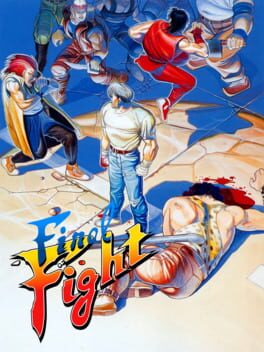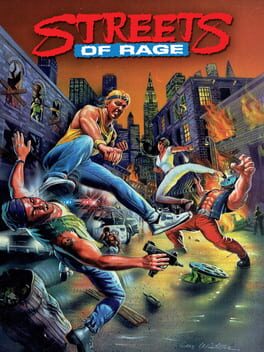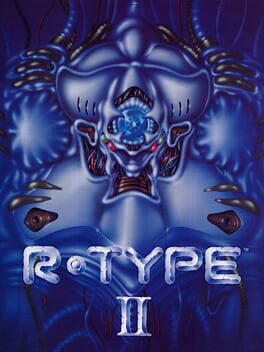ogremode
1992
I started playing Konami's SNES shmup Axelay because, quoting Wikipedia here, "Axelay was developed by most of the same team that would later go on to form Treasure, the creators of Gunstar Heroes." However, looking at the credits of both games on MobyGames, that doesn't really appear to be the case, only sharing "König" Kazuhiko Ishida, who is credited as "Support Programmer" here on Axelay, and "Treasure Logo Programmer" on Gunstar Heroes. I was fascinated by this false lineage, but, truly, this game shares more of a team with the best SNES Castlevania game, Super Castlevania IV, Contra III, and Snatcher.
Axelay has six stages, alternating between vertical and horizontal scrolling levels, like Konami's earlier shooter Salamander. The first level takes place high over the clouds, the second through a space station, the third over a city scape, the 4th through a canyon where you can also fly underwater, the 5th is a lava level that culminates in a giant lava mecha fight, and the 6th is a space level. The levels make heavy use of SNES's Mode 7 scrolling effect, and I love the shimmery look of it. My favorite level for its presentation was the 3rd, a city scape level with these floating bar obstacles that connect as you fly through them. I thought these bars were interesting obstacles, and found this section evocative. What exactly are these bars supposed to be? They felt like some kind of anti-ship defense for the city. Each level has its own flavor and interesting mechanics. For example, in the 4th level, there are glob aliens that will latch onto your ship and constantly drags you down, changing how the ship handles, but not outright damaging you.
This is the first shooter of the classic era I've played all the way through. While it doesn't exactly feel like a pre-Treasure Treasure game, I had a good time with it. (Also, as to pre-Treasure Treasure games, check out this web page I found researching this.)
Axelay has six stages, alternating between vertical and horizontal scrolling levels, like Konami's earlier shooter Salamander. The first level takes place high over the clouds, the second through a space station, the third over a city scape, the 4th through a canyon where you can also fly underwater, the 5th is a lava level that culminates in a giant lava mecha fight, and the 6th is a space level. The levels make heavy use of SNES's Mode 7 scrolling effect, and I love the shimmery look of it. My favorite level for its presentation was the 3rd, a city scape level with these floating bar obstacles that connect as you fly through them. I thought these bars were interesting obstacles, and found this section evocative. What exactly are these bars supposed to be? They felt like some kind of anti-ship defense for the city. Each level has its own flavor and interesting mechanics. For example, in the 4th level, there are glob aliens that will latch onto your ship and constantly drags you down, changing how the ship handles, but not outright damaging you.
This is the first shooter of the classic era I've played all the way through. While it doesn't exactly feel like a pre-Treasure Treasure game, I had a good time with it. (Also, as to pre-Treasure Treasure games, check out this web page I found researching this.)
2000
Sanvein, released in the States as Shooter: Starfighter Sanvein, is a highly stylistic 3d shooter that feels like a game built to run on the computers from Neon Genesis Evangelion. It looks amazing, and it's a lot of fun even just to get through the menus. If you're an Evangelion or shooter fan, absolutely worth checking out, though you might only stay briefly.
Developed by Success, who is more well-known for the Cotton series of shooters, for D3's budget Simple 1500 series, this is an arcadey, time attack 3d shooter with super fast micro levels. Each stage typically has less than five enemies to kill, and often you'll pop into a stage and pop right back out before racing over to the next one. There's a constantly ticking clock, and taking damage lowers how much time you have left. While the game is really fast paced and looks amazing, the sheer amount and lack of variety in the stages makes the game feel really repetitive. It's not that the core loop isn't fun, but that it isn't fun enough to sustain itself. Still, for me this is a "hidden gem" just because of how unique and cool it is look at.
Developed by Success, who is more well-known for the Cotton series of shooters, for D3's budget Simple 1500 series, this is an arcadey, time attack 3d shooter with super fast micro levels. Each stage typically has less than five enemies to kill, and often you'll pop into a stage and pop right back out before racing over to the next one. There's a constantly ticking clock, and taking damage lowers how much time you have left. While the game is really fast paced and looks amazing, the sheer amount and lack of variety in the stages makes the game feel really repetitive. It's not that the core loop isn't fun, but that it isn't fun enough to sustain itself. Still, for me this is a "hidden gem" just because of how unique and cool it is look at.
1982
Namco's Xevious is the original vertical shooter that everyone ripped off, and it's still a decent bit of fun today. You shoot enemies in the air while bombing targets on the ground. Projectiles and enemies are slow, but it can get a little bit hectic when there's a decent number of them on screen. Definitely worth spending some time with, to see where it all started.
1981
Scramble is Konami's earliest horizontal shooting game. It's pretty rudimentary. You fire forward and also drop bombs on enemies on the ground. You also have a fuel gauge that slowly ticks down, and you'll need to refuel by attacking fuel depots.
It's pretty easy going until you get to the final zone, which requires you to fly through tunnels. For the first time in the game, this section also requires accelerating forward. You move forward at a constant pace, but can fly till about halfway horizontally into the screen. You have to do this during certain sections in the final level as you exit a tunnel from a higher part of the level, then have to fly to the opposite corner. You don't have enough time coming out of the tunnel to lower your ship enough, so you have to fly forward out of the tunnel before the screen scrolls over there, then drop back and down at the same time. It's really unintuitive and feels pretty weird. After you get through the series of tunnels, you have a final bomb target to hit to win the game. This is also really difficult to nail, because you have to do a similar maneuver as above to get into the right position. It's kind of confounding and I don't think I would have figured out how to beat the game without watching examples on YouTube. Not nearly as fun as Xevious.
It's pretty easy going until you get to the final zone, which requires you to fly through tunnels. For the first time in the game, this section also requires accelerating forward. You move forward at a constant pace, but can fly till about halfway horizontally into the screen. You have to do this during certain sections in the final level as you exit a tunnel from a higher part of the level, then have to fly to the opposite corner. You don't have enough time coming out of the tunnel to lower your ship enough, so you have to fly forward out of the tunnel before the screen scrolls over there, then drop back and down at the same time. It's really unintuitive and feels pretty weird. After you get through the series of tunnels, you have a final bomb target to hit to win the game. This is also really difficult to nail, because you have to do a similar maneuver as above to get into the right position. It's kind of confounding and I don't think I would have figured out how to beat the game without watching examples on YouTube. Not nearly as fun as Xevious.
1985
Of all the very early shooting games I've played, TwinBee is probably my favorite. It's almost a straight upgrade of Xevious but it adds its own bells and whistles. I especially like the bells—these are your upgrade icons, and drop from clouds you fire through them. The really fun part about them is that they change color when you shoot them, and each color is a different type of upgrade; they also bounce up the screen when you fire at them, so you can find yourself juggling them for the right upgrade, and it's just really fun to keep them up in the air while managing the enemies on screen.
The upgrades themselves are pretty limited, but I like the option style, which has a ghost of your character follow behind you and shoot right behind you, which encourages you to move your character around a lot. I'm looking forward to seeing how the series evolves.
The upgrades themselves are pretty limited, but I like the option style, which has a ghost of your character follow behind you and shoot right behind you, which encourages you to move your character around a lot. I'm looking forward to seeing how the series evolves.
1986
I played the Japanese arcade version bundled with Konami Arcade Classics. An incremental upgrade from Gradius that follows a similar formula, flipping vertical and horizontal perspectives as the levels go on. The particular way the perspective flips here is super sharp in presentation, and there's a good set of upgrades. It is also insanely difficult, and I recommend playing the PC-Engine port instead; it's too bad that version isn't available, because for me it made Salamander a lot more enjoyable.
1992
GI Joe is a simple but pretty fun rail shooter. Unlike Space Harrier, you're bound to the ground and can only move left or right; you can aim up and down from there, but you're otherwise stuck aiming forward from the spot you're facing. I kind of wonder why they didn't go the Space Harrier route, since the GI Joes have jetpacks, but it may have gotten too hectic with multiplayer. You can pick up missiles as you continue, which due a lot more damage than your There are three stages, each composed of different areas within them—you're running towards cobra's base, then inside, or through a cave base etc. The sprites are right out of the comics/cartoon and are fun to see, especially the boss sprites.
1982
River Raid is an early vertical shooter, and it's unsurprisingly rudimentary. You fly a plane down a river and attack enemies. Like Konami's even earlier shooting game, Scramble, you have a fuel meter that slowly ticks down that you'll need to refuel. Notably it was programmed by Carol Shaw, who was able to retire at 35 due to the success of this game.
2006
Replay. Having played a handful of "beat them up" games between finishing God Hand for the first time and the second time, it's fun seeing so many of the ideas that God Hand homages. This review is just a note on some of those.
From Final Fight, there's a handful of enemy types—skinny knife throwers, agile women, plump guys, and the idea of tall and short enemies indicating their strength. There's also the "destroy a car" minigame, and in God Hand there's even throwbacks to that 90s style homophobia. From Streets of Rage, God Hand takes the whip enemies, and also the thing where enemies will sit on the ground and get pouty.
After finishing God Hand again, I started playing God Hand for a third time. It just feels amazing to play. The new game experience reminds me a lot of FromSoft in the level of skill (and level/enemy knowledge) you carry over, even though you don't carry over techniques you bought or health or "tension point" upgrades; probably the game I'd compare it to most is Sekiro. When I finished that game, I ended up speeding through the NG+ and didn't die until I got to the burning bull enemy, which was immensely satisfying. On the other hand, God Hand also feels like there's a lot of skill I have left to build. I started playing the hard mode and got my ass beat in the first level. I want to get there, but it is truly difficult.
From Final Fight, there's a handful of enemy types—skinny knife throwers, agile women, plump guys, and the idea of tall and short enemies indicating their strength. There's also the "destroy a car" minigame, and in God Hand there's even throwbacks to that 90s style homophobia. From Streets of Rage, God Hand takes the whip enemies, and also the thing where enemies will sit on the ground and get pouty.
After finishing God Hand again, I started playing God Hand for a third time. It just feels amazing to play. The new game experience reminds me a lot of FromSoft in the level of skill (and level/enemy knowledge) you carry over, even though you don't carry over techniques you bought or health or "tension point" upgrades; probably the game I'd compare it to most is Sekiro. When I finished that game, I ended up speeding through the NG+ and didn't die until I got to the burning bull enemy, which was immensely satisfying. On the other hand, God Hand also feels like there's a lot of skill I have left to build. I started playing the hard mode and got my ass beat in the first level. I want to get there, but it is truly difficult.
1987
I'm a sucker for the "classicvania" style and figured I'd give this one a try. It was really attractive to me—for one, the arcade sprites are huge and beautiful—admire Simon's Chun-li-esque thighs—and I was interested in seeing how the platforming acton translated into coin-op form. It turns out not very well.
I played the infamously difficult Haunted Castle on the Japanese rom, having heard it's easier than the American one. I was having an alright time until the third level, when it was taking four slaps of my level 1 vampire killer (I had died and lost my power up) to kill this game's flea variant; you simply don't have enough time to fire off four hits before the enemy hits you. Your other option is to rush the enemy and duck at exactly the right moment so he would fly over Simon, but it's 1) really hard to time and 2) useless when two of them are rushing at you, or there's a knight involved. I reset the game, ready to try to get there again with the level 2 vampire killer (which swaps the whip for a morning star flail) to see if it did more damage, and then dug into the settings. Sure enough, Konami Arcade Collection graciously supplies difficulty modifiers. I turned enemy enemy damage on low, and difficulty to easy. It was certainly easier, but still a pain in the ass.
The final level is a long bridge sequence to Dracula's castle. The bridge collapses behind you, while bats dive at you in front of you. When you stop to attack, the bridge collapsing doesn't pause, so as you defend yourself from bats while crossing the bridge you move ever closer to falling off. In fact, if you successfully kill every single bat you encounter, you are certain to be pushed off the falling bridge. However, these bats don't knock you back, so you can truck through them, but you'll take damage. You're forced to strategically kill bats and alternatively take damage while crossing the bridge, and figuring out exactly how many bats to kill to maximize leftover health for the Dracula fight was a weird experience. It's a fascinating bit of design where you literally cannot get through without taking damage. This learning process didn't feel great, but I found it was successfully thematic. You're not getting away clean if you want to kill Dracula. (I found after that you can also just memorize when the bats swoop down then time a jump to kill it as it does, but I'm too stupid for that kind of solution.)
Dracula himself was a total chump, and went down in just a few hits. In general, the bosses of this game are just rewards for making your way through the difficult levels, which I don't mind. I liked seeing Frankenstein and the Gorgon in arcade style, even if you only see them for a few moments.
I can't really recommend this game—The Astyanax is a much better Castlevania arcade game—but I'm glad I checked it out. It's an interesting curiosity and worth seeing if you're a fan of Castlevania.
I played the infamously difficult Haunted Castle on the Japanese rom, having heard it's easier than the American one. I was having an alright time until the third level, when it was taking four slaps of my level 1 vampire killer (I had died and lost my power up) to kill this game's flea variant; you simply don't have enough time to fire off four hits before the enemy hits you. Your other option is to rush the enemy and duck at exactly the right moment so he would fly over Simon, but it's 1) really hard to time and 2) useless when two of them are rushing at you, or there's a knight involved. I reset the game, ready to try to get there again with the level 2 vampire killer (which swaps the whip for a morning star flail) to see if it did more damage, and then dug into the settings. Sure enough, Konami Arcade Collection graciously supplies difficulty modifiers. I turned enemy enemy damage on low, and difficulty to easy. It was certainly easier, but still a pain in the ass.
The final level is a long bridge sequence to Dracula's castle. The bridge collapses behind you, while bats dive at you in front of you. When you stop to attack, the bridge collapsing doesn't pause, so as you defend yourself from bats while crossing the bridge you move ever closer to falling off. In fact, if you successfully kill every single bat you encounter, you are certain to be pushed off the falling bridge. However, these bats don't knock you back, so you can truck through them, but you'll take damage. You're forced to strategically kill bats and alternatively take damage while crossing the bridge, and figuring out exactly how many bats to kill to maximize leftover health for the Dracula fight was a weird experience. It's a fascinating bit of design where you literally cannot get through without taking damage. This learning process didn't feel great, but I found it was successfully thematic. You're not getting away clean if you want to kill Dracula. (I found after that you can also just memorize when the bats swoop down then time a jump to kill it as it does, but I'm too stupid for that kind of solution.)
Dracula himself was a total chump, and went down in just a few hits. In general, the bosses of this game are just rewards for making your way through the difficult levels, which I don't mind. I liked seeing Frankenstein and the Gorgon in arcade style, even if you only see them for a few moments.
I can't really recommend this game—The Astyanax is a much better Castlevania arcade game—but I'm glad I checked it out. It's an interesting curiosity and worth seeing if you're a fan of Castlevania.
1990
I picked up Jaleco's The Astyanax after hearing it mentioned in comparison to Haunted Castle in Cane and Rinse's episode on that game. And rightfully so—in almost every way, The Astyanax is a much stronger execution of a Castlevania arcade idea. I miss using Vampire Hunter, but Roche's axe is satisfying to wield, and has a cool property to it where it will have some hitbox behind your character when Roche swings it back before slamming it forward, so you can end up being surrounded but still be taking out the enemies around you without too much fuss. A few times I was annoyed by the composition of the enemies on the screen—a combination of attack patterns that make it almost impossible to play without taking damage, or too many enemies who take a lot of hits to kill at once, but it wasn't nearly as much of a problem as it is in Haunted Castle. The enemy types lean more fantasy than gothic or Universal horror—mantis men, Harryhausen style cyclops, knights, flying demons with spears that reminded me of the bat wing demons from Anor Londo.
There's one elevator level where enemies drop from the sky, but most of the levels are simple left to right affairs, usually with a handful of platforming heights you can jump between. Each level is arcade short, and culminates in a boss battle. The bosses are pretty simple, though they're more of a fight than Haunted Castle's reward-bosses, and I love seeing the big dragons and wizard and so on. The second to last level even has a sorcerer that feels very Dracula esque as he teleports around and sends beams of attacks at you.
The big surprise is the last level after the sorcerer fight. Roche goes through a portal and is teleported to an H.R. Giger-esque dungeon. The enemy types here are mostly face hugger types that jump at your face, and the final boss is inexplicably a Xenomorph right out of Aliens. The Xenomorph's main attack is extending his arm at you, which really isn't Xenomorph-esque at all. Still, it's a shocking sequence, and I have to imagine absolutely no one would believe you about it back in the day.
There's one elevator level where enemies drop from the sky, but most of the levels are simple left to right affairs, usually with a handful of platforming heights you can jump between. Each level is arcade short, and culminates in a boss battle. The bosses are pretty simple, though they're more of a fight than Haunted Castle's reward-bosses, and I love seeing the big dragons and wizard and so on. The second to last level even has a sorcerer that feels very Dracula esque as he teleports around and sends beams of attacks at you.
The big surprise is the last level after the sorcerer fight. Roche goes through a portal and is teleported to an H.R. Giger-esque dungeon. The enemy types here are mostly face hugger types that jump at your face, and the final boss is inexplicably a Xenomorph right out of Aliens. The Xenomorph's main attack is extending his arm at you, which really isn't Xenomorph-esque at all. Still, it's a shocking sequence, and I have to imagine absolutely no one would believe you about it back in the day.
1987
The sequel to Fantasy Zone is more Fantasy Zone. A lot more Fantasy Zone. Maybe too much more Fantasy Zone.
The core game is exactly the same—search horizontal scrolling levels for special enemies, which you have to destroy before fighting a boss—but this game shakes things up by adding warp icons that take you to new screens within levels. Every new screen multiplies the length by that much, and it can be tedious to navigate the warp system. The icons are always blue, and there's usually two on a screen—there's no way to tell where you're going without memorizing what each icon leads to, so you'll often jump from cleared screen to cleared screen looking for the screen that still has enemies to destroy on it. Even though the warps persistently take you to the same place, it feels like the Lost Woods or something because of how easy it is to get lost—the only distinguishing feature between the two jumps on each stage are if they're on the left or on the right. When you land in another stage from these jumps, you're somewhere away from the warp icons, so you can't really tell which one will take you back to the one you came from. This system makes the game really tedious—not only is there a lot more enemies to kill before you get to the next boss, but the warp system is confounding. I wish there was something in place to stop you from getting lost—either have the warp always take you to a level with enemies to kill, or use different colored warp icons so I can distinguish them easier. Once you kill all the enemies, the boss room unlocks—these have red warp icons, but you still have to navigate to the stage with the boss icon. There's no indication that you've killed all the required enemies either, so you might try the boss icon, find it doesn't work, then have to search the level for the remaining bad guys to kill.
The bosses themselves are as fun as the first one. They're usually pretty interesting shooting game bosses where you have to hit a weak spot or a bunch of weak spots to take them down. The exception is the final boss, which moves to the left and will crush you if you can't kill it fast enough, which you can't unless you're way better at this game than I am, or unless you're beefed up on upgrades before going into it. In general in this game it feels like buying upgrades is a lot more necessary than it was in the first game, as the required enemies are real bullet sponges for your regular attack but will melt away if you've got an expensive weapon. Money is never an issue, but its tedious to go back to the store constantly.
I have to say I like the sequel to the Fantasy Zone a bit less than I liked the original, but it's still bright and feels pretty fun, even if it gets a little tiresome. I played the Master System version, but the arcade version looks pretty different (and less tedious), so I might check that one out.
The core game is exactly the same—search horizontal scrolling levels for special enemies, which you have to destroy before fighting a boss—but this game shakes things up by adding warp icons that take you to new screens within levels. Every new screen multiplies the length by that much, and it can be tedious to navigate the warp system. The icons are always blue, and there's usually two on a screen—there's no way to tell where you're going without memorizing what each icon leads to, so you'll often jump from cleared screen to cleared screen looking for the screen that still has enemies to destroy on it. Even though the warps persistently take you to the same place, it feels like the Lost Woods or something because of how easy it is to get lost—the only distinguishing feature between the two jumps on each stage are if they're on the left or on the right. When you land in another stage from these jumps, you're somewhere away from the warp icons, so you can't really tell which one will take you back to the one you came from. This system makes the game really tedious—not only is there a lot more enemies to kill before you get to the next boss, but the warp system is confounding. I wish there was something in place to stop you from getting lost—either have the warp always take you to a level with enemies to kill, or use different colored warp icons so I can distinguish them easier. Once you kill all the enemies, the boss room unlocks—these have red warp icons, but you still have to navigate to the stage with the boss icon. There's no indication that you've killed all the required enemies either, so you might try the boss icon, find it doesn't work, then have to search the level for the remaining bad guys to kill.
The bosses themselves are as fun as the first one. They're usually pretty interesting shooting game bosses where you have to hit a weak spot or a bunch of weak spots to take them down. The exception is the final boss, which moves to the left and will crush you if you can't kill it fast enough, which you can't unless you're way better at this game than I am, or unless you're beefed up on upgrades before going into it. In general in this game it feels like buying upgrades is a lot more necessary than it was in the first game, as the required enemies are real bullet sponges for your regular attack but will melt away if you've got an expensive weapon. Money is never an issue, but its tedious to go back to the store constantly.
I have to say I like the sequel to the Fantasy Zone a bit less than I liked the original, but it's still bright and feels pretty fun, even if it gets a little tiresome. I played the Master System version, but the arcade version looks pretty different (and less tedious), so I might check that one out.
1989
Final Fight isn't the first "beat them up" game, but it's the moment the genre became tolerable, and it can even reach heights of fun. I played through the game using all the characters, but my favorite was the huge Mike Haggar. The characters all play slightly differently, and have different special moves. I don't like that the special moves burn health to use them—the idea is that they should become tactical, but the moveset is somewhat limited, so I found myself using the special moves pretty often. I'm also not good at this game whatsoever, but the game doesn't make me want to get good at it.
Enemy types that appear in God Hand
- Cars
- Knife throwers
- Women that jump around like ninjas
- Homophobia
- Fat guys
- Andre the Giant looking guys
Enemy types that appear in God Hand
- Cars
- Knife throwers
- Women that jump around like ninjas
- Homophobia
- Fat guys
- Andre the Giant looking guys
1991
Streets of Rage begins as a pretty straight Renegade/Final Fight riff, though its even more boiled down than that game. Maybe popping open the manual would explain things a bit, but I played the whole game without it being completely clear to me how to grapple. Altogether it feels pretty rudimentary, but it gets by on its excellent soundtrack and the sheer look of it.
1989
More R-Type. I found this one a smidge easier than the first game. Excellent art and art direction, and brings a few more ideas to the genre, like the waterfalls that push your ship down, or the final boss where you have to fire through gates that flip and block you off. Cool bosses in general, and has some really nice looking mecha enemies.
